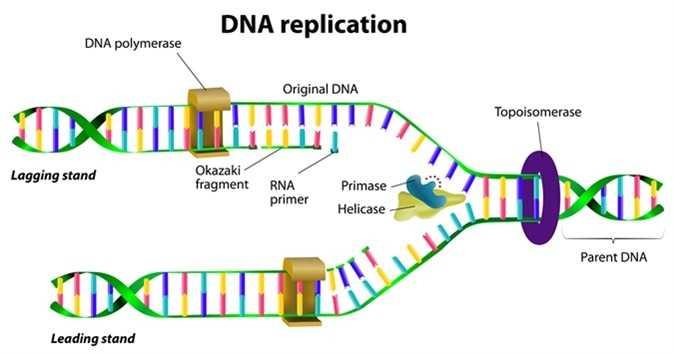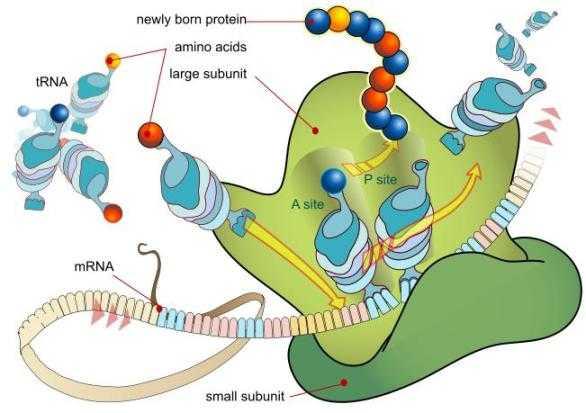How DNA Works | HowStuffWorks
Curated from: science.howstuffworks.com
Ideas, facts & insights covering these topics:
7 ideas
·621 reads
1
1
Explore the World's Best Ideas
Join today and uncover 100+ curated journeys from 50+ topics. Unlock access to our mobile app with extensive features.
Protein Synthesis: Transcription and Translation
The two major stages in making a protein: transcription and translation.
When a cell makes a copy of the DNA, it's then called the RNA since it uses a different type of nucleic acid which is ribonucleic acid. The RNA is used in translation where it's converted (translated) into a sequence of amino acids that make up the protein.
24
112 reads
The Progressors of DNA
- Friedrich Meischer - originally discovered nucleic acids in 1868
- Oswald Avery and his colleagues - proved that DNA contained information by experimenting with bacteria in 1943
- Alfred Hershey and Martha Chase - supported the information role of DNA through experimentation with viruses
- James D. Watson and Francis Crick - discovered the structure of DNA in 1953 that made them receive a Nobel Prize
29
126 reads
DNA Structure
- The deoxyribonucleic acid (DNA) is a pattern made up of four different parts called nucleotides.
- Each nucleotide consists of a sugar (deoxyribose) bound on one side to a phosphate group and bound on the other side to a nitrogenous base.
- There are two classes of nitrogen bases called purines (double-ringed structures) and pyrimidines (single-ringed structures).
- The DNA has four bases: Adenine, Cytosine, Guanine, and Thymine.
- The DNA is often visualized like a spiral staircase -- the double helix.
25
94 reads
The DNA inside a cell
- The DNA is a long molecule that is about a millimeter long.
- While humans have 46 chromosomes, plants and animals are complex organisms which can contain 50 to 100 thousand genes on many different chromosomes.
- The DNA of such organisms are twisted around bead-shaped proteins called histones. They are coiled tightly to form chromosomes that are located in the nucleus of the cell.
- Every time a cell reproduces the DNA gets copied and distributed to each offspring.
25
93 reads
DNA Replication Process
- For the replication process to occur, it is highly dependent on whether the cells are prokaryotic or if it's a eukaryote. Regardless of where it happens, the DNA replication process is the same.
- The DNA is shaped like a double helix that runs in opposite directions in which is able to unzip down the middles so that it may serve as a template for the other side.
- The small area where it can unzip is called a replication fork, where it moves down the entire length of the molecule.
26
67 reads
How the DNA Operates
- The DNA carries the instructions on making protein, which is basically the determinant for our physical characteristics.
- A protein is basically made up of a lot of amino acids and it has many functions from aiding digestion to making antibodies for the immune system.
- Protein usually differs from one another, and the particular sequence causes the chain of the amino acids together, this then is encoded in the DNA.
24
68 reads
Building A Protein
If we equate DNA as the master blueprint, we could then say that a protein is the house. There are many involved in this process such as the messenger RNA which is the working copy of the DNA, the cytoplasm, amino acids, ribosomes, and the transfer RNA molecules.
Basically speaking, proteins are made inside cells. The instructions of how to make proteins are held inside the DNA molecules and the two major stages in making a protein are called transcription and translation.
25
61 reads
IDEAS CURATED BY
Violet S.'s ideas are part of this journey:
Learn more about health with this collection
How to use storytelling to connect with others
The psychology behind storytelling
How to craft compelling stories
Related collections
Similar ideas
3 ideas
Too Much Charisma Can Actually Hurt a Leader's Effectiveness
science.howstuffworks.com
4 ideas
Can a Vision Board Really Affect Your Future?
science.howstuffworks.com
2 ideas
How (and Why) Hurricanes Get Their Names | HowStuffWorks
science.howstuffworks.com
Read & Learn
20x Faster
without
deepstash
with
deepstash
with
deepstash
Personalized microlearning
—
100+ Learning Journeys
—
Access to 200,000+ ideas
—
Access to the mobile app
—
Unlimited idea saving
—
—
Unlimited history
—
—
Unlimited listening to ideas
—
—
Downloading & offline access
—
—
Supercharge your mind with one idea per day
Enter your email and spend 1 minute every day to learn something new.
I agree to receive email updates




